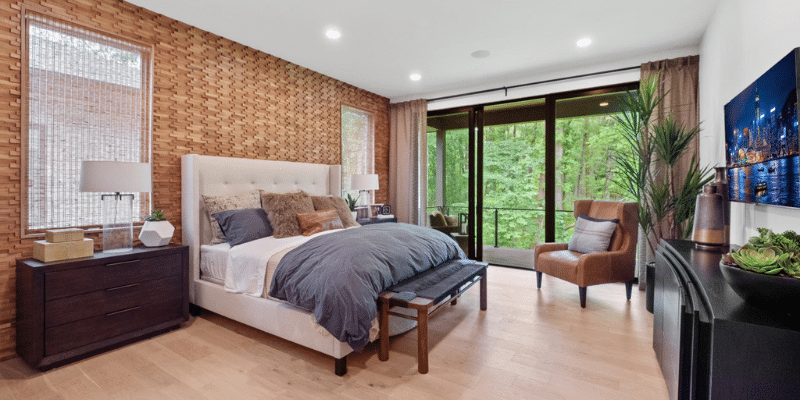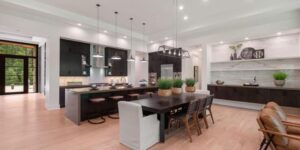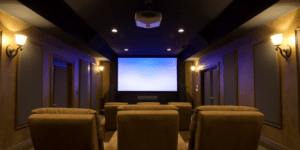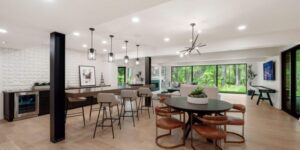Homeowners increasingly seek ways to reduce their environmental impact while creating beautiful, comfortable living spaces. At Cambridge Homes, we’re committed to bringing sustainable home ideas to life in our custom-built luxury residences. Let’s explore innovative approaches to eco-friendly living that you can incorporate into your dream home.
The Growing Importance of Sustainable Housing
As climate change concerns rise, the demand for sustainable homes has never been higher. Homeowners recognize the long-term benefits of eco-friendly design, from reduced energy costs to improved indoor air quality and a smaller carbon footprint.
Environmental consciousness is now a mainstream priority. Sustainable homes not only contribute to a healthier planet but also offer tangible benefits to homeowners, including lower utility bills, increased property value, and improved quality of life.
Key Elements of a Sustainable Home
Energy-Efficient Design
Energy efficiency is a cornerstone of sustainable housing. This starts with your home’s design and orientation to maximize natural light and heat. Large, well-placed windows can reduce your need for artificial lighting, while proper insulation keeps your home comfortable year-round with minimal energy use.
Adding double-pane or triple-pane windows to your home provides excellent insulation. Strategically placed overhangs can shade your windows from intense summer sun while allowing winter sunlight to warm the home.
Solar Power Integration
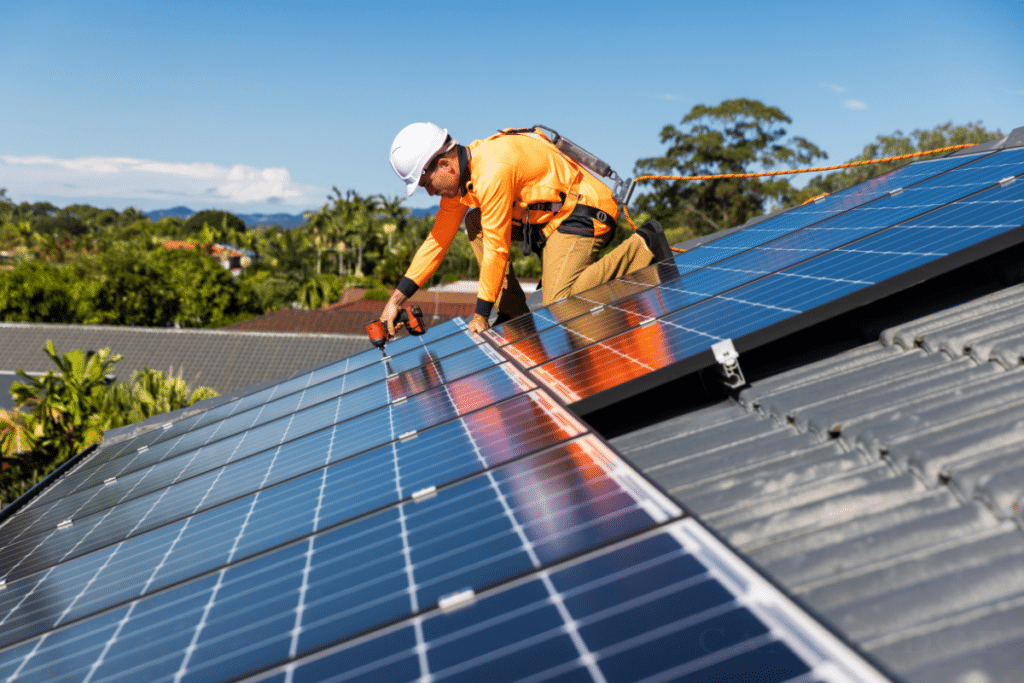
Harnessing the sun’s energy is a game-changer for sustainable homes. At Cambridge Homes, we offer full or supplemental solar power options for our custom ranch homes. This renewable energy source can significantly reduce or eliminate your reliance on the grid, lowering both your carbon footprint and energy bills.
While the initial investment in solar panels may seem significant, many homeowners find that the system pays for itself within 5-10 years through energy savings and potential tax incentives. Modern solar panel systems are more efficient and aesthetically pleasing than ever. You might opt for solar roof tiles that blend seamlessly with traditional roofing materials, maintaining your home’s architectural integrity while providing clean energy.
Smart Home Technology
Smart home systems allow precise control over your home’s energy use. From programmable thermostats to automated lighting and appliance control, these technologies optimize your home’s efficiency without sacrificing comfort.
These systems are becoming increasingly user-friendly, allowing you to control various aspects of your home through smartphone apps or voice commands. They can learn your family’s habits and adjust settings accordingly, further increasing energy savings. For instance, your smart thermostat might lower the temperature when everyone is asleep or away, then return to a comfortable level just before you wake up or come home.
Water Conservation Features
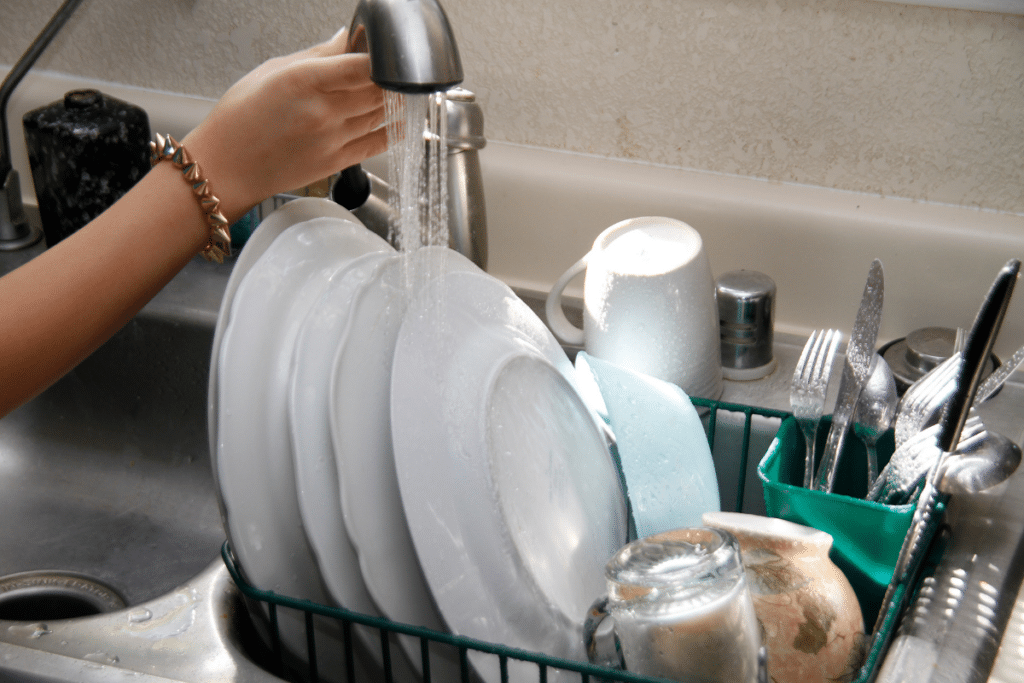
Sustainable homes often incorporate water-saving fixtures and systems. Low-flow faucets, dual-flush toilets, and rainwater harvesting systems can help reduce your water consumption, preserving this precious resource.
Greywater systems, which reuse water from sinks and showers for irrigation, are another innovative way to conserve water. These systems can significantly reduce your outdoor water use, particularly in drought-prone areas.
Sustainable Materials and Construction Practices
When building your sustainable home, the materials you choose and the construction methods employed play a crucial role in its overall environmental impact. Let’s explore some eco-friendly options that can make your home more sustainable from the ground up.
Eco-Friendly Building Materials
Choosing sustainable materials is crucial in green home construction. Options include:
- Reclaimed wood for flooring and accent features
- Recycled metal for roofing
- Low-VOC paints and finishes for improved indoor air quality
- Locally sourced stone and other materials to reduce transportation emissions
You might consider bamboo, a rapidly renewable resource that’s gaining popularity as a sustainable alternative to traditional hardwoods. It’s durable and attractive and can be used for flooring, cabinetry, and even structural elements in some cases.
Innovative Insulation Solutions
Proper insulation is key to maintaining a comfortable, energy-efficient home. Modern options like spray foam insulation and recycled denim insulation offer excellent thermal performance while minimizing environmental impact.
Aerogel, once used primarily in aerospace applications, is now finding its way into home insulation. This ultralight material offers superior insulation properties with minimal thickness, making it ideal for renovations where space is at a premium.
Green Roofing Options
Green roofs, which involve growing vegetation on rooftops, provide natural insulation, reduce stormwater runoff, and can help combat the urban heat island effect. While not suitable for every home, they’re an innovative option for those looking to maximize their property’s eco-friendly potential.
Cool roofs, which use reflective materials to reduce heat absorption, are another option for improving your home’s energy efficiency, particularly in warmer climates.
Bringing Nature Home: Biophilic Design
Biophilic design, which incorporates natural elements into the built environment, is gaining popularity in sustainable home construction. This approach enhances the aesthetic appeal of your home and promotes well-being by connecting you with nature.
Indoor-Outdoor Living Spaces
At Cambridge Homes, we understand the importance of connecting with nature. Our custom ranch homes often feature covered lanais with electronic roll-down screens, allowing you to enjoy the outdoors while maintaining comfort and privacy.
These spaces can serve as tranquil retreats or vibrant entertainment areas, seamlessly blending the indoors with the natural world outside. You might consider incorporating water features or fire pits to enhance the sensory experience of these spaces.
Natural Materials and Textures
Incorporating natural materials like stone, wood, and organic textiles throughout your home can create a sense of warmth and connection to the natural world.
Consider using locally sourced materials when possible, not only to reduce transportation emissions but also to create a home that feels truly rooted in its environment. Exposed wooden beams, stone accent walls, or even a living wall of plants can bring the outdoors in, creating a calming atmosphere.
Indoor Plants and Green Walls
Integrating plants into your home’s design improves air quality and adds a vibrant, living element to your space. Vertical gardens or green walls can be stunning focal points while contributing to a healthier indoor environment.
Beyond their aesthetic appeal, indoor plants can help regulate humidity, filter air pollutants, and even boost mood and productivity. Consider incorporating a mix of low-maintenance plants suited to your home’s light conditions for year-round greenery.
The Cambridge Homes Difference: Sustainable Luxury Living
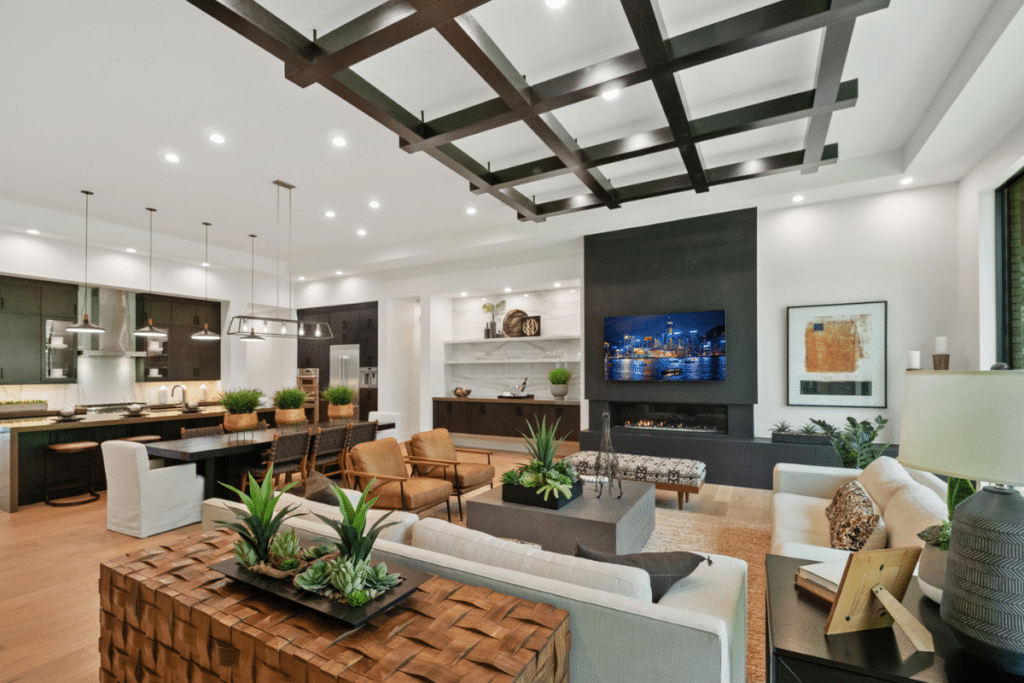
At Cambridge Homes, we’re committed to bringing sustainable home ideas to life without compromising on luxury or style. Our Terra development in Novi, Michigan, showcases how eco-friendly design can seamlessly blend with modern prairie-style architecture to create stunning, environmentally-conscious homes.
From energy-efficient appliances to smart home capabilities, every aspect of our custom ranch homes is designed with sustainability in mind. Our team works closely with homeowners to incorporate their preferred green features, ensuring each home is as unique as it is eco-friendly.
Ready to explore sustainable luxury living? Contact Cambridge Homes today to schedule a tour of our Terra development and discover how we can bring your green home dreams to life, potentially saving you thousands on energy costs over the years.
Frequently Asked Questions
- How much can I save on energy bills with a sustainable home?
Energy savings can vary, but homeowners often report reductions of 30-60% on their energy bills after implementing sustainable features like solar power, efficient insulation, and smart home systems. Your exact savings will depend on factors such as local energy costs, climate, and the specific features you implement. - Are sustainable homes more expensive to build?
While some sustainable features may have higher upfront costs, they often lead to significant long-term savings through reduced energy and water bills. Many eco-friendly options are becoming more affordable as they become mainstream. When planning your sustainable home, it’s important to consider the life-cycle costs of these features, not just the initial investment. - Can I incorporate sustainable features into an existing home?
Absolutely! You can implement many sustainable upgrades in existing homes, such as installing solar panels, upgrading to energy-efficient appliances, or improving insulation. Even small changes like switching to LED lighting or installing a smart thermostat can make a significant difference in your home’s energy efficiency. - How does sustainable home design impact resale value?
Sustainable homes often command higher resale values due to their lower operating costs and increasing consumer demand for eco-friendly living spaces. Features like solar panels, energy-efficient appliances, and smart home systems are increasingly seen as desirable amenities in the real estate market. - What certifications should I look for in a sustainable home?
Common certifications include LEED (Leadership in Energy and Environmental Design), ENERGY STAR, and NGBS (National Green Building Standard). At Cambridge Homes, we can work with you to achieve your desired certifications for your custom home. These certifications provide third-party validation of a home’s sustainable features and can be valuable for resale.


